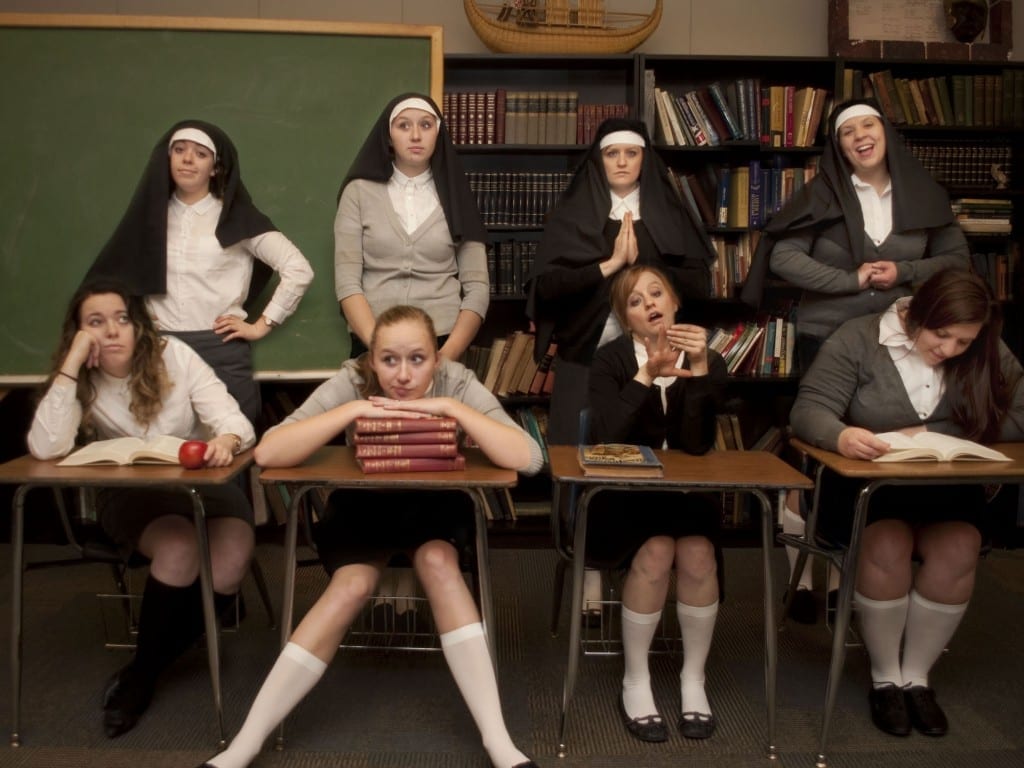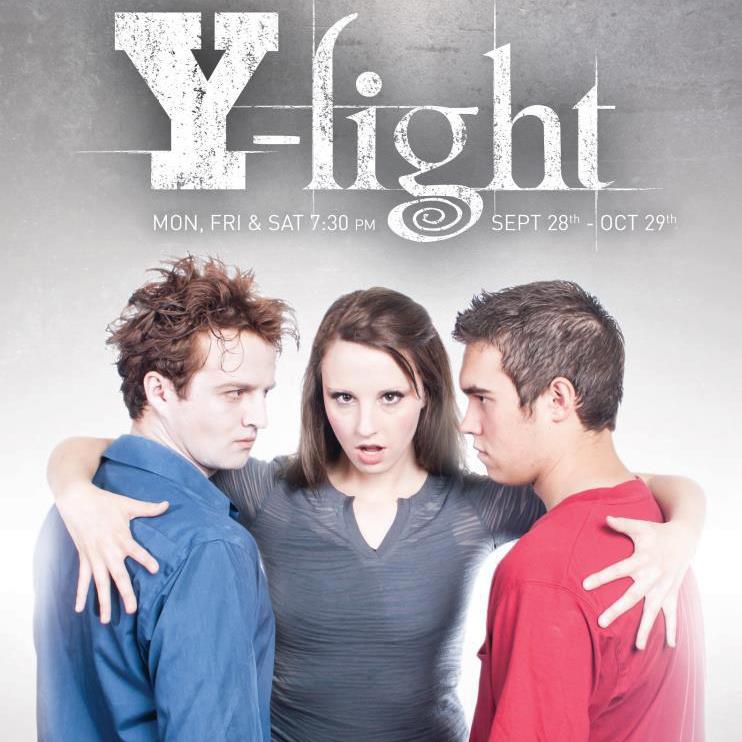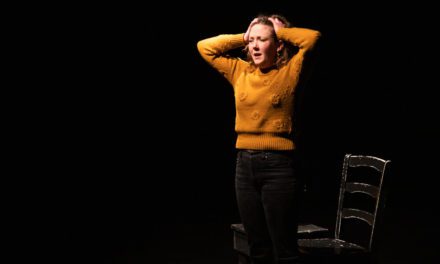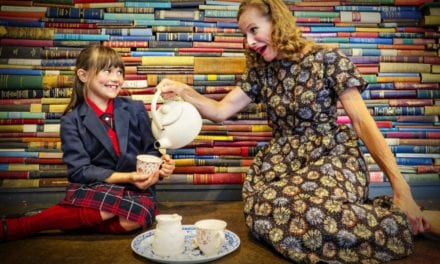HIGHLAND — There are Catholic school girls in Highland? Although I’m sure that there is a Catholic population in Highland, Utah, is just not a place where one would go looking for Catholic school girls. But Catholic School Girls is also the name of a play, written by Casey Kurtti, that is Highland City Arts Council’s newest production. Why should you buy tickets? The show provides a brief glimpse into the lives of four girls as they go from first through eighth grade in Catholic School during the late sixties. As the play progresses, it examines national, political, and personal events that both affect the characters’ lives and challenge their religious convictions.
Catholic School Girls is a lighthearted comedy with a few sobering moments. It is not a hard hitting drama, a detailed critique of religion, or a pretentious sermon. Instead, Catholic School Girls is more of a gentle Sunday drive that leads to a conflict that is an appropriate topic for a viewer of any age. I expected the conflict to be much heavier in nature because director Jordan Long’s note in the program alluded to a “tragedy” in the play. The tragedy isn’t as gritty or jarring as I thought it would be, but it’s still important because it is something that will eventually occur in everyone’s life.
The four actresses in the cast play dual roles as both student and teacher as the years pass in the show. As the calendar on stage is moved forward in time the audience sees the students grow. The teachers change, as do the photographs of the U.S. president and Pope. Amy McNeill (as both the student Colleen Dockery and Sister Mary Lucille) was easily the lead comedian. McNeill’s role as precocious troublemaker came in to play several times throughout the show, especially during her bid to be the lead in the talent show. Caitlyn Lunceford (as student Wanda Sluska and Sister Mary Agnes) was the stunt woman of the troupe, and her tabletop acrobatics were performed with ease. Lunceford’s portrayal of Sister Mary Agnes created a character that was believable as the most requested teacher in the school. Jessica Johnson (as Elizabeth McHugh and Sister Mary Thomasina) was impressive with her strong performance of a young lady faced with adult issues that try her faith and tax her emotionally. Johnson owned the deeper moments of the show. Jordana Burns (as Maria Theresa Russo and Sister Mary Germaine) most strongly demonstrated the arc of a character going from a sugared up first grader to the too-cool-for-school teenager 8th grader. I found Burns’s behavior eerily similar to the way an actual teenaged girl acts. All four actresses seemed to be most in their comfort zones as the teachers, however. Also, the actresses had several pauses that resembled an attempt to remember their lines, but most likely these were character choices that will smooth out as the show progresses.
The Highland Arts Council pulled off a great performance with what seemed to be a limited budget and staff. The stage was very detailed with period appropriate decorations, even down to the contents of the bookcase. It truly resembled a classroom, which was the only setting in the script. However, during the show a prop resembling an iPod with ear buds made an appearance, although this was not a great distraction. Rather, for me it was “a penny from the future” Somewhere in Time-type moment.
The stage lighting was entirely comprised of a spotlight oddly positioned behind the audience. This made the stage darker than what is seen in many plays, and the light created shadows on the faces of several cast members at different intervals. The entire technical department for the show was a laptop with small speakers also positioned behind the audience. Although I am generally a fan of throwing money at a play, a simple setting was fully appropriate for this simple story.
Catholic School Girls is appropriate for all audiences, and it has deeper content that will lead to post-play conversation topics. The show is a good choice for mixed audiences because it is highly unlikely to offend.







